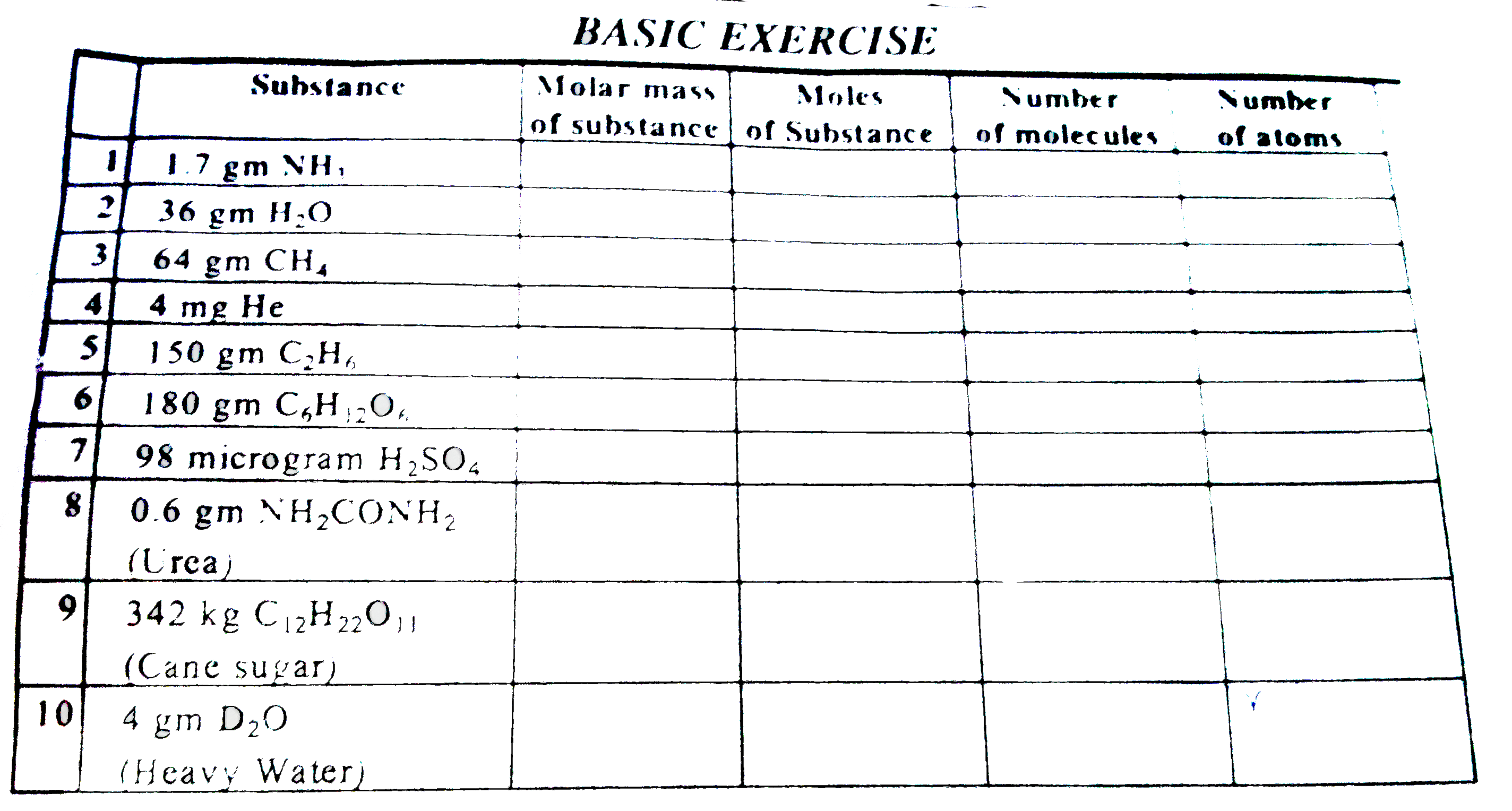Two containers A and B have the same volume. Container A contains 5 moles of O2 gas. Container B contains 3 moles of He and 2 moles of N2. Both the containers are separately kept in vacuum at the same temperature. Both the containers have very small orifices of the same area through which the gases leak out. Compare the rate of effusion of O2 with that of He gas mixture.
To solve the problem of comparing the rate of effusion of O2 with that of the He gas mixture in container B, we will use Graham's law of effusion. According to Graham's law, the rate of effusion of a gas is inversely proportional to the square root of its molar mass.
1. Identify the Moles and Molar Masses:
- Container A (Oxygen):
- Moles of O2=5 moles
- Molar mass of O2=32g/mol
- Container B (Helium and Nitrogen):
- Moles of He = 3 moles
- Moles of N2=2 moles
- Molar mass of He = 4 g/mol
- Molar mass of N2=28g/mol
2. Calculate the Total Moles in Container B:
- Total moles in container B = Moles of He + Moles of N2
- Total moles = 3+2=5 moles
3. Calculate the Rate of Effusion for Each Gas:
- According to Graham's law:
Rate of effusion∝Number of moles√Molar mass
- For O2:
RateO2∝5√32
- For Helium (only):
RateHe∝3√4=32
- For Nitrogen:
RateN2∝2√28
4. Calculate the Rate of Effusion of the Mixture in Container B:
- To find the effective rate of effusion for the gas mixture in container B, we can consider the contributions from both gases:
- The total rate of effusion for the mixture can be expressed as:
RateB=RateHe+RateN2
- Thus:
RateB∝32+2√28
5. Compare the Rates:
- To compare the rates of O2 and the mixture, we can set up the ratio:
RateO2RateB=5√3232+2√28
- Calculate the numerical values to find the final comparison.
Final Comparison:
After calculating the above expressions, you can conclude whether the rate of effusion of O2 is greater than, less than, or equal to that of the He gas mixture.
- Container A (Oxygen):
- Moles of O2=5 moles
- Molar mass of O2=32g/mol
- Container B (Helium and Nitrogen):
- Moles of He = 3 moles
- Moles of N2=2 moles
- Molar mass of He = 4 g/mol
- Molar mass of N2=28g/mol
- Total moles in container B = Moles of He + Moles of N2
- Total moles = 3+2=5 moles
- According to Graham's law:
Rate of effusion∝Number of moles√Molar mass
- For O2:
RateO2∝5√32
- For Helium (only):
RateHe∝3√4=32
- For Nitrogen:
RateN2∝2√28
- To find the effective rate of effusion for the gas mixture in container B, we can consider the contributions from both gases:
- The total rate of effusion for the mixture can be expressed as:
RateB=RateHe+RateN2
- Thus:
RateB∝32+2√28
- To compare the rates of O2 and the mixture, we can set up the ratio:
RateO2RateB=5√3232+2√28
- Calculate the numerical values to find the final comparison.
After calculating the above expressions, you can conclude whether the rate of effusion of O2 is greater than, less than, or equal to that of the He gas mixture.
Topper's Solved these Questions
- BOOK - VMC MODULES ENGLISHCHAPTER - STATES OF MATTEREXERCISE - Level-175videos
STATES OF MATTER
- BOOK - VMC MODULES ENGLISHCHAPTER - STATES OF MATTEREXERCISE - Level-250videos
STATES OF MATTER
- BOOK - VMC MODULES ENGLISHCHAPTER - STATES OF MATTEREXERCISE - LEVEL -0 ( Short Answer Type)8videos
STATES OF MATTER
- BOOK - VMC MODULES ENGLISHCHAPTER - STATES OF MATTEREXERCISE - IMPECCABLE50videos
STATES OF MATTER
- BOOK - VMC MODULES ENGLISHCHAPTER - STOICHIOMETRY - IEXERCISE - JEE Advanced (Archive)31videos
STOICHIOMETRY - I
Similar Questions
0.5 mole of P4O10 contains
View SolutionA bulb contains 1.6g of O2 contains.
View SolutionOne mole of CO2 contains:
View Solution
If a closed container contain 5 moles of CO2 gas, then find total number of CO2 molecules in the container (NA=6×1023)View Solutionn mole of He and 2n mole of O2 is mixed in a container. Then (CpCv)mix will be
View SolutionTwo containers A and B are partly filled with water and closed. The volume of A is twice that of B and it contains half the amount of water in B. If both are at the same temperature, the water vapour in the containers will have pressure in the ratio of
View SolutionA flask contain 88g of CO2 gas. Calculate how many moles ofCO2 gas does it contain?
View SolutionA flask contain 84g of CO2 gas. Calculate how many moles ofCO2 gas does it contain?
View SolutionA flask contain 44g of CO2 gas. Calculate how many moles ofCO2 gas does it contain?
View SolutionIf both gases (O2 and He ) have same temperature so rate of diffusion of O2 will be
View Solution

